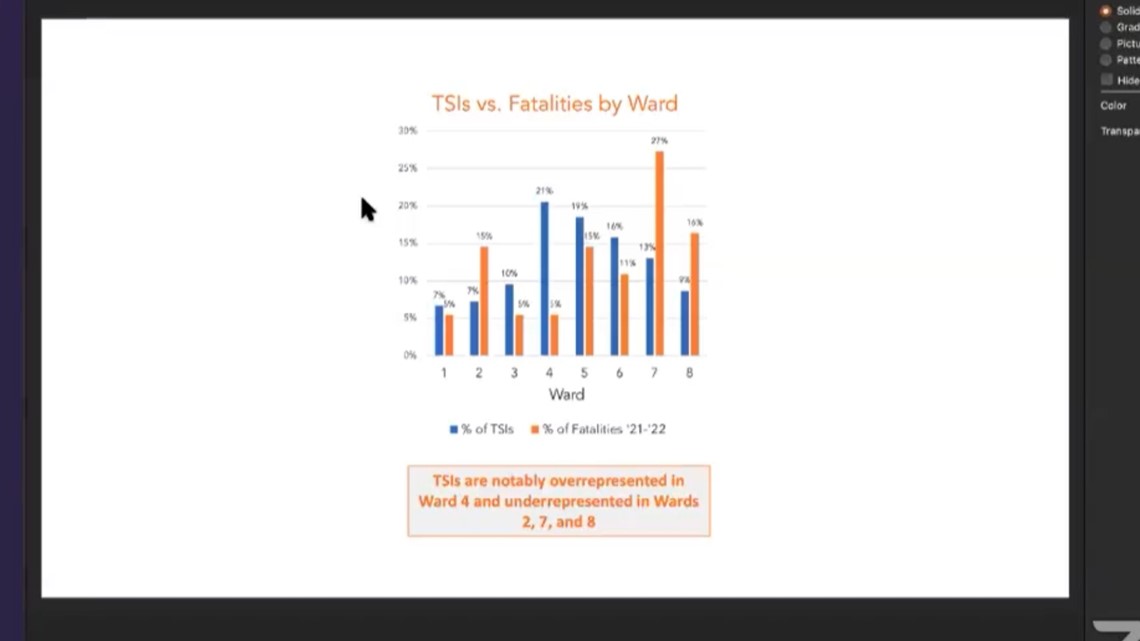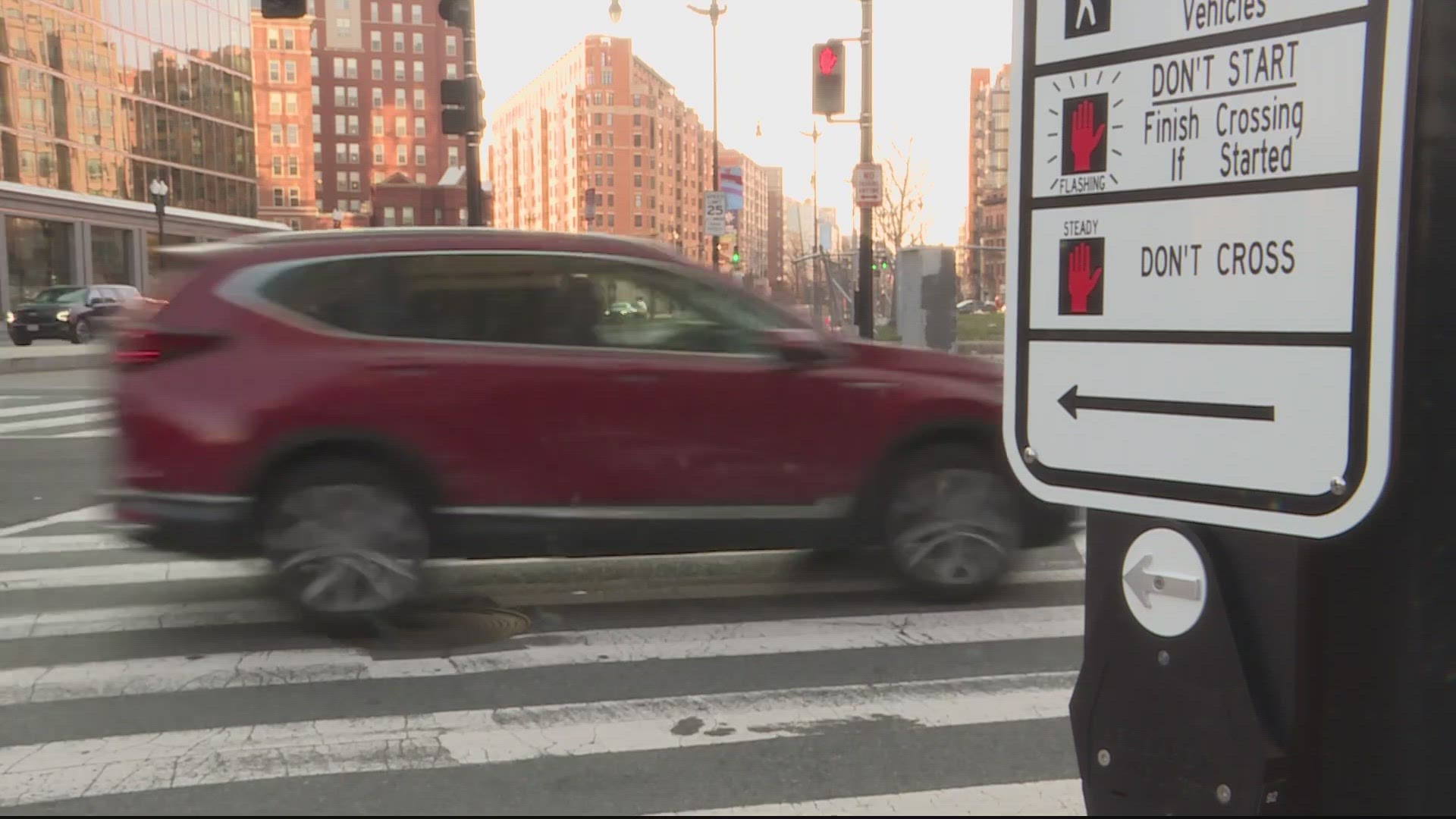WASHINGTON — After a biker was hit by a driver in Northwest D.C., he's pushing for safety upgrades.
Gordan Chaffin said last Monday he was biking near his work at the intersection of Massachusetts and New Jersey Avenues NW.
He waited for the signal to move across the crosswalk, started pedaling, and then a driver turned left into the crosswalk.
“The driver came out of nowhere from my right side, swept my front wheel and hit me over," Chaffin said.
He said this happened right before 7 p.m.
“I have some scrapes and bruises, road rash as they say," Chaffin said. "I'm thankful that it's not worse.”
This intersection is about a block from a haunting reminder of what could have happened.
“My friend Jim was struck and killed by a driver while riding his bicycle on here on Massachusetts Avenue," he said.
He's talking about Jim Pagels, who was killed in April 2021. Now, a ghost bike marks the place where he lost his life.
His death was one of 40 traffic fatalities, according to the Department of Transportation's Director, Everett Lott.
In an oversight hearing last week, Lott said 2022 saw 35 traffic fatalities.
Chaffin said DC is making progress with safer streets, but they're relying mainly on tallying up fatalities or serious injuries, not taking into account scrapes like his.
“They're called near misses, or just scrapes and bruises," Chaffin said. "And people who depend upon bicycles or walking for essential travel, have stories like this on a weekly basis almost.”
It's a data gap multiple councilmembers brought up to Lott at that hearing.
"The data that we're going to base things on is faulty data, we know that, because MPD doesn't report crashes," Councilmember Janeese Lewis George said.
Lott protested, saying "There may be some missing data points, but we have to use some data points, and we do have a lot of data that's out there."
He said they do take into account crashes, but also traffic volume, speeds, and proximity to schools as DDOT works to figure out where safety upgrades are needed most.
Chaffin said it's a start but is pushing for more changes -- faster.
“This needs to change before another person is killed, or struck and seriously injured," he said.


In last week's hearing, Lott discussed the recent change to the Traffic Safety Input system. He said the goal is to make it more equitable.
Looking at this graph he shared, he said the data shows that the number of requests for safety upgrades, called TSIs, does not always correspond with where the most traffic fatalities are.
For example, Ward 7 makes up only 13% of TSIs, but saw 27% of the District's traffic deaths last year.
Compare that to Ward 4, which made up 21% of TSIs, but saw 5% of D.C.'s fatalities.
Some Councilmembers expressed concerns that the new system will discount neighbors' knowledge and experience in determining improvement projects, but Director Lott said they have to start somewhere and will keep re-evaluating.

